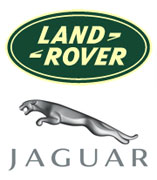On Saturday, November 24, Tata Motors rolled out its millionth car from its plant in the western India city of Pune. It was a significant achievement for an Indian automobile manufacturer. Only Maruti — earlier a joint venture with the government and now a subsidiary of Suzuki Motors of Japan — has reached that milestone. It took 11 years (Maruti has made more than five million now); the Tatas have done it in nine.
“I am pleased that the company has rolled out the one-millionth car off the Indica platform — something that was considered inconceivable by the project’s critics during the investment and the initial gestation period,” Tata Group chairman Ratan Tata told guests who assembled to mark the occasion. “The team of people involved with the journey to this milestone should feel satisfied at having created a robust car business for the company.”
If anyone deserves the credit, it is Tata himself. When he set out to make a car based on indigenous technology, almost all treated it as a joke. Tata, they said, was a car aficionado and he had allowed his emotions to get the better of his business acumen.
Today, albeit in a different context, people are criticizing Tata again. He has bid for the U.K.-based Land Rover and Jaguar units that are being sold by Ford Motor Company. Many skeptics in India are wondering what he proposes to do with them. While the Bombay Stock Exchange Sensitive Index (Sensex) has been zooming, Tata Motors has been a relative underperformer. The credit squeeze and the high interest rates, which have affected sales of commercial vehicles — Tata Motors’ mainstay — have had a role to play in this sentiment. But, though the acquisitions will not impact the Tata Motors’ balance sheet in the short term, some anxiety does exist over the long-term implications.
“Frankly, the market is a bit confused,” says Nandan Chakraborty, head of research at stock-brokerage firm Enam Securities. According to another analyst, “We do not know whether it is Tata’s personal ambition that is driving the deal or whether it is a strategy that has been thought out for the good of the company.”
Unions Say Yes
To be sure, it’s hardly a done deal yet. On November 22, two days before the millionth Tata car was rolled out, Unite, Britain’s largest trade union in the auto sector, issued a statement favoring the Tatas. According to Tony Woodley, Unite joint general secretary, the union shop stewards at Jaguar Land Rover (JLR) had made clear their preference to remain a part of Ford. But if a sale was inevitable, “they felt the best interests of the workforce would be served by finding a partner with an established presence and background in manufacturing…. The stewards agreed that the Tatas best fit these criteria.”
The unions are a force to reckon with in Britain. Earlier, Woodley had told Thomson Financial News: “There are no ifs, buts, ands or maybes here. We want full involvement. We want clear decisions securing the jobs of all our members now and in the future along with their pay and pensions plus the future of all Ford plants in the U.K.”
What the union decision probably means is that the private equity players who had thrown their hats into the ring may be eliminated from the running. Among them is the JP Morgan Chase-backed One Equity Partners, whose bid is led by former Ford CEO Jacques Nasser. Another American buyout firm — Apollo Management, which specializes in the buyout of distressed assets — has tied up with the Mahindras, the second Indian group in the race. The Mahindras too have “an established presence and background in manufacturing,” so they are still part of the reckoning.
John Paul MacDuffie, a Wharton professor of management and co-director of the International Motor Vehicle Program, says that since Ford is a major employer in Britain, “the union’s endorsement of the deal is very important.” The fact that the union has favored the Tatas, however, need not mean that they are a shoo-in to acquire Jaguar and Land Rover. “Ford desperately needs money, so if the Tatas have a limit on what they might bid, and some of the private equity players bid higher, the Tatas could still lose out to them,” he explains. Still, he notes, the sale of Land Rover — the last major British auto maker — still arouses considerable emotion. That could well mean that Ford might prefer to deal with a known entity (such as the Tatas) rather than with private equity investors who could potentially dismember Jaguar and Land Rover and sell off the parts piecemeal.
So far, no one is willing to discuss details of the deal. The Tatas are understandably silent. Mahindra & Mahindra (M&M) CEO Anand Mahindra is equally circumspect. “I’m legally constrained from giving any kind of response on this topic,” he says. And Ford spokesperson John Gardiner says, “These are complex commercial discussions and we believe it is in the best interest of all parties that they are carried out in a confidential manner.” He adds, however, that things are moving. “We anticipate an agreement by early next year at the latest,” he says.
Tatas’ Track Record
What has tilted the unions the Tatas way is their track record. The group took over British steelmaker Corus last year and everybody seems happy. There have been no job losses, and Tata Steel technology and techniques have resulted in significant cost savings. The Mahindras have also orchestrated several takeovers in recent times — particularly in the auto components area — but these have been low profile. Besides, while the Tatas are firmly entrenched in automobiles, the Mahindra profile is more that of a tractor manufacturer. They have the indigenously-designed SUV — the Scorpio — and a joint venture with Renault, which began producing the Logan earlier this year.
The Jaguar-Land Rover deal is likely to have a price tag of some $3 billion. The Tatas have played in this league before: The Corus bid was $8.1 billion. The Mahindras are a $6 billion group. The Tatas weigh in at $28.8 billion (2006-07), so there is no debate over who has the bigger guns.
What does Jaguar-Land Rover bring to the table for the successful bidder? For one thing, these are marquee brands, and pride of ownership — which is what the equity analysts fear — could be a factor driving the desire to acquire them. But more tangible benefits also exist. Jaguar is losing money; it is expected to end up $500 million in the red this year. But Land Rover has been going strong; it should make a profit of more than $1 billion.
Given Land Rover’s profitability, it might seem surprising that Ford has bundled it for sale with the cash-guzzling Jaguar. The reason, according to MacDuffie, has to do with Ford’s ill-fated expansion into premium auto brands. “The company bought premium brands such as the Aston Martin (made popular by James Bond), Jaguar, Land Rover and Volvo,” he says, “based on its belief that multiple luxury car brands could be served by a new kind of dealership. That strategy turned out to be wrong. It turned out that there was no advantage to selling multiple luxury brands.” In addition, as Ford faced a financial crisis, Alan Mulally, who replaced Bill Ford as the company’s CEO, decided that the company should return to its core business of cars and trucks. As a result, Ford has already sold Aston Martin and is in the process of selling the other premium brands, including Jaguar and Land Rover. (Volvo, however, is an exception.)
Hemant Luthra, M&M executive director who has orchestrated many of the group’s takeovers, recently told Delhi-based daily Business Standard: “The technology that Land Rover has makes sense for M&M.” He was significantly silent on Jaguar.
It is here that the misunderstandings over Ratan Tata’s aspirations have arisen. The Jaguar, which can trace its history back to 1922, is a lemon in today’s context. “Nobody wants it,” says Ranojoy Mukerji, editor of trade magazine Auto India. Land Rover, on the other hand, is a good strategic fit.
Pros and Cons
Mukerji summarizes the advantages and disadvantages of the Jaguar-Land Rover deal as follows:
Land Rover’s Benefits:
- Upmarket SUV brand
- Access to the latest engine technology
- Access to the latest in four-wheel drive technology
- Readymade R&D
- Access to prestigious clientele
- Three product lines: Land Rover (for farmers), Freelander (for urban yuppies) and Range Rover (for super-premium SUV users)
- Considered the best four-wheel drive manufacturer in the world.
Land Rover’s Disadvantages:
- High cost of existing infrastructure
- Significant investments required.
Jaguar’s Benefits:
- Upmarket car brand
- Access to new technologies
- Premium customer profile competing with Mercedes, BMW and Audi
- Considered the best British car brand
Jaguar’s Disadvantages:
- The Tatas’ (or Mahindras’) expertise in passenger cars is limited
- High cost of maintaining existing infrastructure
- Major investments will be required.
The bidders would obviously like to negotiate for a standalone Land Rover. But Ford has been insisting that they take on Jaguar, too. “We have always said that we are looking at the possibility of selling the combined Jaguar Land Rover business,” says Gardiner.
The unions obviously know that Jaguar-Land Rover is a bit of a curate’s egg — which is to say, it is good in parts. This is why they are so particular about job security and promises from prospective buyers. And they prefer a company with a track record in manufacturing because private equity players (the traditional buyers of distressed assets) would break up the company and sell off different parts.
The Tatas and other companies in the fray have made presentations to the unions and the U.K. government. They have made promises, which include no closure of units or layoffs. (Some 15,300 British jobs are at stake.) Ford insists that the successful bidder must agree that production will not be shifted for the next five years.
According to MacDuffie, the logic of private equity buyers such as the group led by Nasser is usually to take a company apart and sell it piece by piece. “But the Tatas, if they have patience, could also do the same thing,” he says. “They could initially focus on integrating Land Rover into Tata Motors’ operations, and then they could sell off Jaguar once the relevant time period has passed. The Tatas may be able to do that if they take a long-term approach.”
Trophy Deal?
Critics allege that the Tatas are pursuing Jaguar as a so-called “trophy” acquisition. When Japanese companies were riding high, they picked up iconic assets such as Rockefeller Center (Mitsubishi), Columbia Pictures (Sony), Pebble Beach (Taiheiyo Club, Inc.) and MCA (Matsushita). Is Ratan Tata just acquiring a trophy for the Tata Motors mantelpiece?
MacDuffie believes that for the Tatas, taking over Jaguar may be more than just a vanity deal; it could also be a shrewd branding strategy. “The Tatas might have the idea that acquiring a world-class brand could be a way to increase visibility for the company on the world state,” he says. “They have done it in the past with the acquisition of brands such as Tetley Tea and Corus Steel.” In addition, in the Tatas’ hands, Jaguar well become a brand whose ‘Britishness’ — with leather interiors, high-quality paneling, and so on — they might choose to emphasize. The labor intensive parts of such work could move to India at a cost advantage while the core manufacturing operations remain in Britain. That might allow the Tatas to reposition the Jaguar as a premium British brand. In combination with the overall branding strategy, the Tatas’ proposed acquisition looks like it is driven by strategic insight rather than by hubris,” he says.
This argument also has a flip side, however. The Tatas’ expertise in the auto sector is at the lower end of the spectrum. The Indica and its variants are relatively low-tech and inexpensive. The group’s focus today is on a Rs. 1 lakh ($2,500) car, which is expected to roll out next year. “The world is still waiting to see the Rs. 1 lakh car,” MacDuffie notes. “It will continue to be a challenge for the Tatas to make that strategy succeed, and tending to Jaguar-Land Rover could be a big distraction.”
Other marketing experts say there is a mismatch between the Tata image in the automobile arena and the Jaguar acquisition. “You can’t be all things to all people,” says Mukerji of Auto India. Adds Chakraborty: “Uncertainty will continue until these issues are clarified.”
Don’t expect any clarifications in a hurry, however. Even if the Tatas plan to sell Jaguar as early as they can (depending on their agreements with the unions and Ford management), it is politically incorrect to talk about it now. And, of course, there is a possibility that Ratan Tata, for whom cars have been a lifelong passion, could turn it around.
If he doesn’t manage to do so, will he sell Jaguar? In an earlier era, the Tatas would have found the idea sacrilegious. But Ratan Tata has been more pragmatic. Since he took over the reins of the group, he has disposed of many companies that didn’t fit into his strategic plan. Soap manufacturer Tata Oil Mills, for one, was sold off to Hindustan Unilever. Even stakes in MNC joint ventures, such as those with IBM and Pepsi, were divested in favor of the foreign major when new regulations in the country allowed them to go it alone. More recently, the Tatas sold their 30% stake in VitaminWater maker Glaceau to Coca-Cola for $1.2 billion. The Tatas had paid $677 million for Glaceau less than a year ago.
Besides, Ratan Tata’s first independent assignment at the group was to close down textile company Empress Mills — the first time in the history of the Tatas that a functioning company was shuttered. “Yes, people were skeptical when he first unveiled his auto sector plans,” says a senior Tata official. “But he has proved himself. And he also knows when to abandon a sinking ship when there is no other option.”
Funding the Deal
Another question that analysts are asking concerns the funding plan for Jaguar-Land Rover. True, Tata Motors won’t have to cough up big bucks immediately. But the latest quarterly results haven’t been heartening. Credit Suisse fears that Tata Motors’ cash flow will face pressures this year. Until interest rates fall, commercial vehicles will not move at the needed speed.
There is also another issue. Many of the group’s purchases and investments have been partly funded by Tata Sons, the holding company for Tata Consultancy Services (TCS). For instance, Tata Sons divested about 2% of its stake in TCS earlier this year, bringing its holding down from 78.35% to 76.01%. Observers say this was to partly fund the Corus acquisition. Today, however, the weakening dollar and fears of a recession in the U.S. have hit the bottom line of Indian software and services companies. It is not an appropriate time to sell a further stake in TCS, particularly as the market might read wrong signals into it. “But money won’t be a problem,” says Chakraborty.
Some analysts see this acquisition — or another like it — as something that is necessary to further the Tatas’ globalization plans. Other companies in the group have stepped forward smartly with acquisitions such as Corus and tea major Tetley. Tata-Corus is the world’s fifth largest steel maker, and Tata Tea-Tetley is now the second largest tea brand in the world.
The $8 billion Tata Motors already has an international presence of sorts. But it has remained below the radar. The Indica, the Indigo and the Indigo Marina have made a mark in several overseas markets in Asia, Europe, Africa, West Asia and South America. The company is the world’s fifth largest medium and heavy truck manufacturer, with exports to several countries.
Tata Motors and Fiat Auto have formed a joint venture in India to make passenger cars, engines and transmissions for the Indian and overseas markets. The company also has an agreement with Fiat to build a pick-up vehicle at Córdoba, Argentina. Tata Motors’ international footprint includes Tata Daewoo Commercial Vehicle in South Korea; Hispano Carrocera, a bus and coach manufacturer in Spain in which the company has a 21% stake; a joint venture with Marcopolo, the Brazil-based body-manufacturer of buses and coaches; and a joint venture with Thonburi Automotive Assembly Plant Company of Thailand to manufacture and market pickup vehicles in that country. It has research centers in India, the U.K. and in its subsidiary and associate companies in South Korea and Spain.
“Tata Motors hopes to pick up speed in the U.K. [with the acquisition of] the European luxury brands Jaguar and Land Rover,” says a report by equity research firm Hem Securities. “It is [also] eyeing auto-parts makers in U.S. Tata Auto Comp Systems, a supplier of vehicle components, is interested in growing inorganically through acquisition.”
But these transactions will be peanuts compared to the Jaguar-Land Rover deal. That’s where all attention is focused now. If things go as planned, Land Rover is likely to be a smooth drive for the Tatas. But in Jaguar, they could easily have a wildcat by the tail.



